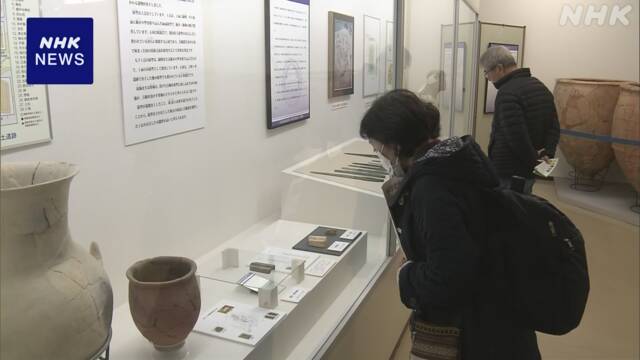At the Yoshinogari site in Saga Prefecture, an exhibition of excavated items that are believed to be one of the oldest in Japan, such as molds used to manufacture bronze ware in the middle of the Yayoi period, has begun.
The exhibition began with three excavated items that are believed to be the oldest in Japan, which were used for the manufacture of bronze vessels in the middle of the Yayoi period, and were found in the so-called "mystery area" where a full-scale survey was conducted at the Yoshinogari site for the first time in 3 years since last year.
Of these, the stone mold used for casting the bronze sword and spear is 9 cm long, 4.6 cm wide, and 1.6 cm thick, and grooves are dug on both sides to pour the molten bronze.
The material is similar to a stone called "serpentine" used for molds on the Korean Peninsula, which was an advanced place for bronze casting at that time, and it is the first time it has been discovered at this site.
Also on display are stone casts for casting swords and earthenware for temporarily storing bronze melted at high temperatures.
In the "Mystery Area", the "Sarcophagus Tomb", a stone tomb made of stone from the late Yayoi period, was found in April this year, and it has attracted nationwide interest, and many people visited it on the 4th.
A 7-year-old man from Kansai City said, "I think that people in the Yayoi period often made such elaborate things, and I think that it was a cutting-edge land of this era."
A 64-year-old man visiting from Tokyo said, "This is my first time here, but I am impressed by the skills of the people in the past."
The exhibition will be held until December 59 at the Yoshinogari Ruins Exhibition Room.

